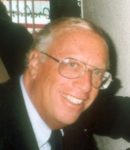
BOCA RATON, Florida — Most people think that since Jewish ancestors placed certain books in the Hebrew Bible, this means that they are significant in some way, and this way is clear to even the average reader. Nothing is further from the truth. All of the biblical books have deep messages. Some are even obscure and difficult to understand. The book of Isaiah is an example.
Maggid Books has just published an excellent study of Isaiah called Isaiah: Prophet of Righteousness and Justice by two prominent and highly respected scholars, Yoel Bin-Nun and Binyamin Lau. both of whom are interested in telling exactly what the Bible text is saying, not what people read into it. “Isaiah” is part of a series from Koren Publishers Jerusalem that uses an interdisciplinary approach that incorporates traditional rabbinic interpretations with scholarly literary techniques to explore the characters, themes, and text of the Hebrew Bible.
Among the many problems that the two scholars address is what is the proper order of Isaiah’s prophecies. For example, they recognize that chapter 1 was not Isaiah’s first prophecy and we need to identify which of his many prophecies came first. Verse 2:4 contains the famous words, “They will beat their swords into plowshares and their spears into pruning hooks; nation will not lift up sword against nation, neither will they learn war anymore.” When was this prophecy made and in what context? Another problem is that Isaiah was a master poet, yet lots of his images are obscure, such as 2:5, what does “light” mean in the statement “light of the Lord”?
The scholars also address who wrote the book of Isaiah and when was it done. What was the political scene during the lifetime of Isaiah in Judea where he lived, in Assyria, and Egypt? What bothered the prophet Isaiah? Are modern scholars correct in recognizing that there is a tripartite division in the book which shows that there were three different authors: one focusing on the terrible conditions existing in and outside of Judea where Isaiah lived during his lifetime, another examines the years of captivity, and a third looking at the post-captivity years in Judea? Where in the biblical canon should the book be placed? The Talmud places it after the book of Ezekiel, the Greek Septuagint has it after the Twelve Prophets, but our current books place it first among the books of the latter prophets.
Most significantly, in 45:1 Isaiah calls the non-Israelite Cyrus “God’s Messiah” and there are over a dozen references to him in the book. Isaiah lived in the mid-eighth century BCE, but King Cyrus of Persia lived after Isaiah’s death, dying in 529 BCE. How could Isaiah know about him? What role did Cyrus play in Jewish history? What does the Bible mean by calling Cyrus the Messiah? Similarly, Isaiah speaks, as previously mentioned, the years of captivity and the post-captivity years. The captivity occurred in 586 BCE long after Isaiah died.
Readers of this new commentary will derive much knowledge not only about the prophet Isaiah but also much about a problem period of Jewish history.
*
Rabbi Dr. Israel Drazin is a retired brigadier general in the U.S. Army chaplain corps, and is the author of more than 50 books.
